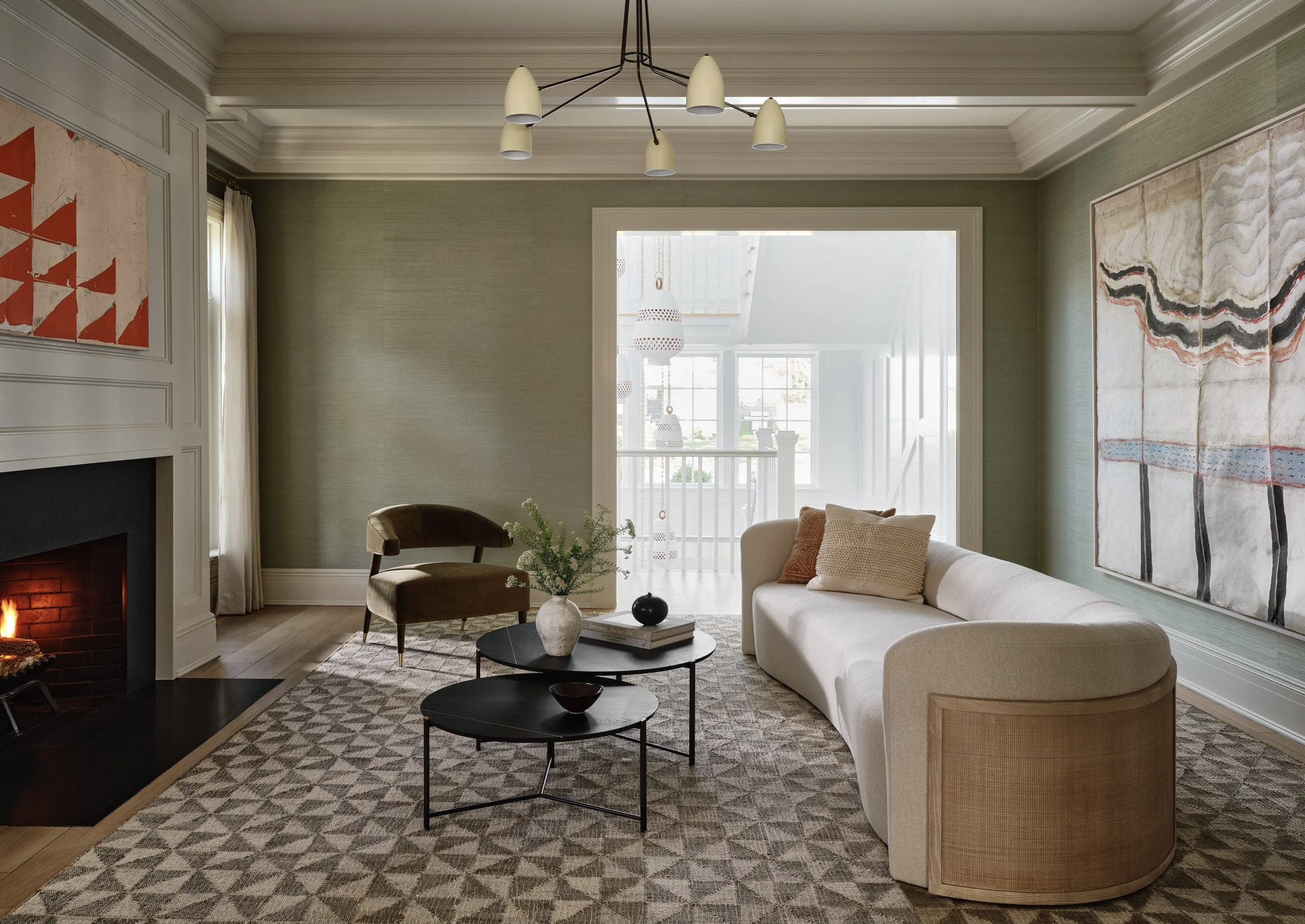How to Make Your Home Feel Like You Hired a Designer (Even If You Didn’t!)
We have the pleasure of being able to view some of the most beautifully designed homes in Charlotte with our clients. We know firsthand that good design can not only sell a house, but it can also truly improve your quality of life. Our homes are our refuge, our self expression, and the hub of our busy lives. At the end of the day, we all want to live full lives in beautiful spaces we love.
But where do you start? If hiring a professional interior designer isn’t in the cards for you right now, don’t fret. You can still elevate your home with these easy, designer-approved tips that we have learned and embraced over the years.
Buy a Bigger Area Rug
While rugs can add color, pattern, and texture to a room, their true purpose is to ground and define the space. Your rug should be proportional to the room itself and the furniture it sits under. A rug that is too small can make your room feel awkward and smaller. You don’t want your furniture to float around the rug or to look like they are hanging on to the edge for their dear life. The designer rule of thumb is that your rug should at least be large enough to fit the front legs of your main pieces of furniture. Even better is a rug size that can accommodate all of the furniture legs.
Lower Your Artwork
Hanging art is, well, more of an art form than an exact science. However, one of the most common mistakes that people make when decorating their own home is hanging the artwork too high. So having a few thoughtful designer guidelines can help ensure that your art looks both balanced and effortlessly stylish. When hanging art on a blank wall or a spot without furniture below, aim to have the center of the piece around 57-60 inches from the floor. This puts the center of the artwork around eye level for most people. If you are hanging artwork above a piece of furniture like a sofa, console, or even a fireplace mantle, the bottom of the frame should be about 6-8 inches above the top of that furniture piece.
Pull Your Furniture Away from the Wall
The best furniture placement factors in functionality, traffic flow, focal points, balance, scale, and so much more. No wonder it can feel overwhelming to us non-designers! One easy tip to employ though is not to push everything against the walls. Pulling your furniture away from the walls, even just a few inches, gives needed breathing room so the room feels more inviting and spacious. Floating furniture can be especially helpful in larger rooms because it gives you the ability to create conversation zones that feel more natural, eliminating the need to yell across the room to someone sitting on a different sofa. Just remember to ground your conversation area with a rug when you pull your furniture into the center of the room.
Ditch the Matching Sets
The best homes feel like the person who lives there, not a furniture showroom. Designers create cohesion through a shared color palette, balanced patterns, and complementary styles. It’s all about mixing and matching vs. just matching so it’s time to ditch the notion of purchasing furniture sets. Instead, let your home evolve over time by buying and collecting pieces that you truly love. It’s an amazing way to curate spaces that are uniquely you.
Layer Your Lighting
Layered lighting is a design principle that involves using a combination of various levels of lighting for a more harmonious environment. Ambient lighting provides general illumination often from ceiling fixtures, recessed lights, or chandeliers. Task lighting focuses on providing directed light for specific functions like reading lamps, bathroom vanity lights, and pendants over your kitchen island. Accent lighting then layers in to add depth and visual interest. These are your more decorative, but still functional lights. Try to have different levels of lighting in every space. Your life will be forever changed when you no longer have to rely solely on harsh overhead lighting in your home. You can thank us later!
Add Window Treatments
Designers never default to only blinds when it comes to window treatments. This isn’t to say that blinds aren’t a great choice, but they certainly shouldn’t be the only choice. Whether its drapery panels, cafe curtains, or roman shades, thoughtful window treatments can deliver that designer look. Some tricks of the trade are hanging curtains high and wide (not sitting right on the window) to maximize the window size, taking curtains to floor so they look tailored to your space, and layering different treatments such as wide-slat wooden blinds framed by full drapes for a more luxurious look.
Do you have any other designer tips or tricks to share? We would love to hear how you elevate the design of your home.







